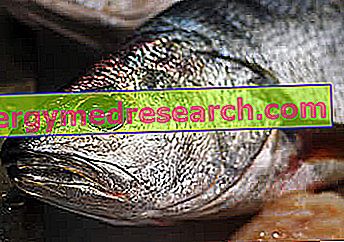Introduction
Eating Behavior Disorders
Anorexia Nervosa (AN) is a food behavior disorder (DCA), which is associated with symptoms, behaviors, attitudes and therefore quite specific diagnostic criteria.

What are DCAs?
DCAs are psychiatric diseases characterized by the presence of alterations in eating behavior. In addition to the AN, among the DCAs we recognize:
- Bulimia Nervosa (BN)
- Binge Eating Disorder (BED).
DCAs that do NOT meet all the criteria of a specific disorder are classified as eating disorders Not Otherwise Specified (NAS), or defined as "border line".
What is Anorexia Nervosa?
Anorexia Nervosa is a eating disorder that leads to an absolute refusal to maintain the Body Mass Index (BMI) above the normal minimum, due to the altered perception of weight and body image.
Who Affects Anorexia Nervosa?
Based on what is mentioned in the Diagnostic Statistical Manual of mental disorders, the prevalence of Anorexia Nervosa is far superior in industrialized countries where food is abundant and where the value of thinness (especially for women) is emphasized.
Anorexia Nervosa rarely arises before puberty, but in any case it seems that, in cases with pre-pubertal onset, the clinical case is more serious for the associated mental disorders. The prevalence among women is 0.5% and in males it is about one tenth of that of women.
How to recognize it
Warning! The presence of one or more pathological symptoms, although insufficient for a complete diagnosis, is to be considered a serious risk factor in the evolution of an eating disorder proper, therefore it underlines the need for a rapid diagnostic procedure and a specific therapeutic program.
Diagnostic Criteria of Anorexia Nervosa
The diagnostic criteria for Anorexia Nervosa are closely linked to particular symptoms and behaviors; In the case:
- Refusal to maintain body weight above the normal minimum weight
- Intense fear of gaining weight
- Presence of an alteration of the body image as regards body shapes and sizes
- In the female sex, in the post-pubertal period, there is amenorrhea.
Other manifestations and attitudes that are sometimes associated with anorexia nervosa are:
- Discomfort in eating in public
- Feelings of inadequacy
- Need to keep the surrounding environment under control
- Mental rigidity
- Reduced spontaneity in interpersonal relationships
- Perfectionism
- Repression of initiative and emotional expressiveness.
Binge eating and Classification of the AN
Based on the presence or absence of regular binges or elimination behaviors, Anorexia Nervosa differs in the following subtypes:
- Restricted Anorexia Nervosa: diet, fasting and physical activity
- Anorexia Nervosa con Abbuffate / Condotta di Elimination: regular binges and elimination behaviors (self-induced vomiting, laxatives, diuretics or enteroclisms).
Recognizing Anorexia Nervosa
Thanks to the understanding of the diagnostic criteria it is possible to trace a profile (albeit approximate) of the anorexic or anorexic; the ability to recognize (more or less in detail) such behaviors and attitudes can be of fundamental importance in early diagnosis, as a determining factor in the prevention of chronic disease, and for the treatment of Anorexia Nervosa.
Indeed, the anorexic subject has a weight and a Body Mass Index below the normality threshold (BMI <18.5). The evidence of this aspect depends on two factors: time and severity of the disease, ability to hide one's thinness.
It is common for the anorexic to resort to some tricks to hide her condition; among them, the most frequent are: dressing in loose clothing that hides thinness, avoiding eating in public and lying about one's eating habits.
Moreover, it often happens that the anorexic woman disguises the excessive practice of physical activity assuming an attitude of marked "health"; among anorexics it is common to resort to compensatory methods such as self-induced vomiting, laxatives, diuretics or enterochlisms if it is not possible to avoid eating normally.
All this can be associated with a separation from friendships and family ties due to a marked sense of inadequacy.
It is often possible to recognize the tendency of the anorexic woman to acquire excessive levels of attention towards people and the surrounding environment, while in the work and / or school sector they distinguish themselves for the assiduous search for excellent results completely denying the possibility of failure intention.
In the initial phase of the disease, properly called "Honeymoon", the anorexic appears euphoric, happy and carefree; it is a transient condition that often totally leads to the first suspicions of an eating disorder.
At the time of diagnosis or research of symptoms, an irrefutable distortion of one's body, of one's forms and one's weight emerges, highlighting an absolute discrepancy between the real and the perceived body condition.
Nutrition is experienced as a terrifying practice, an enemy to be fought by any means : hence the distinction between restricted Anorexia Nervosa, which includes diet, fasting and physical activity, and Anorexia Nervosa with purges and purging.
What to do
Suspicion of Anorexia Nervosa: what to do?
Anorexia Nervosa is a serious psychiatric disorder that requires a multidisciplinary intervention (psychologist or psychiatrist - internist - dietician or nutritionist) of a specialized hospital center; unfortunately, a big limit to the care and care of anorexics is represented by their denial and by the repudiation of the therapy itself. However, early recognition of bodily distress is an important alarm bell (as well as a first symptom and risk factor) for the suspicion of eating disorders.
Collective information and the disclosure of typical symptoms are certainly a determining factor in the prevention of Anorexia Nervosa.
Bibliography
- American Psychiatric Association (1994); Translators: Antonella Armani, Piera Fele, Mauro Mauri, Massimo Rossi, Francesco J. Scarsi; - TR translators: Susanna Banti, Mauro Mauri; Diagnostic and statistical manual of mental disorders; 624-637.



